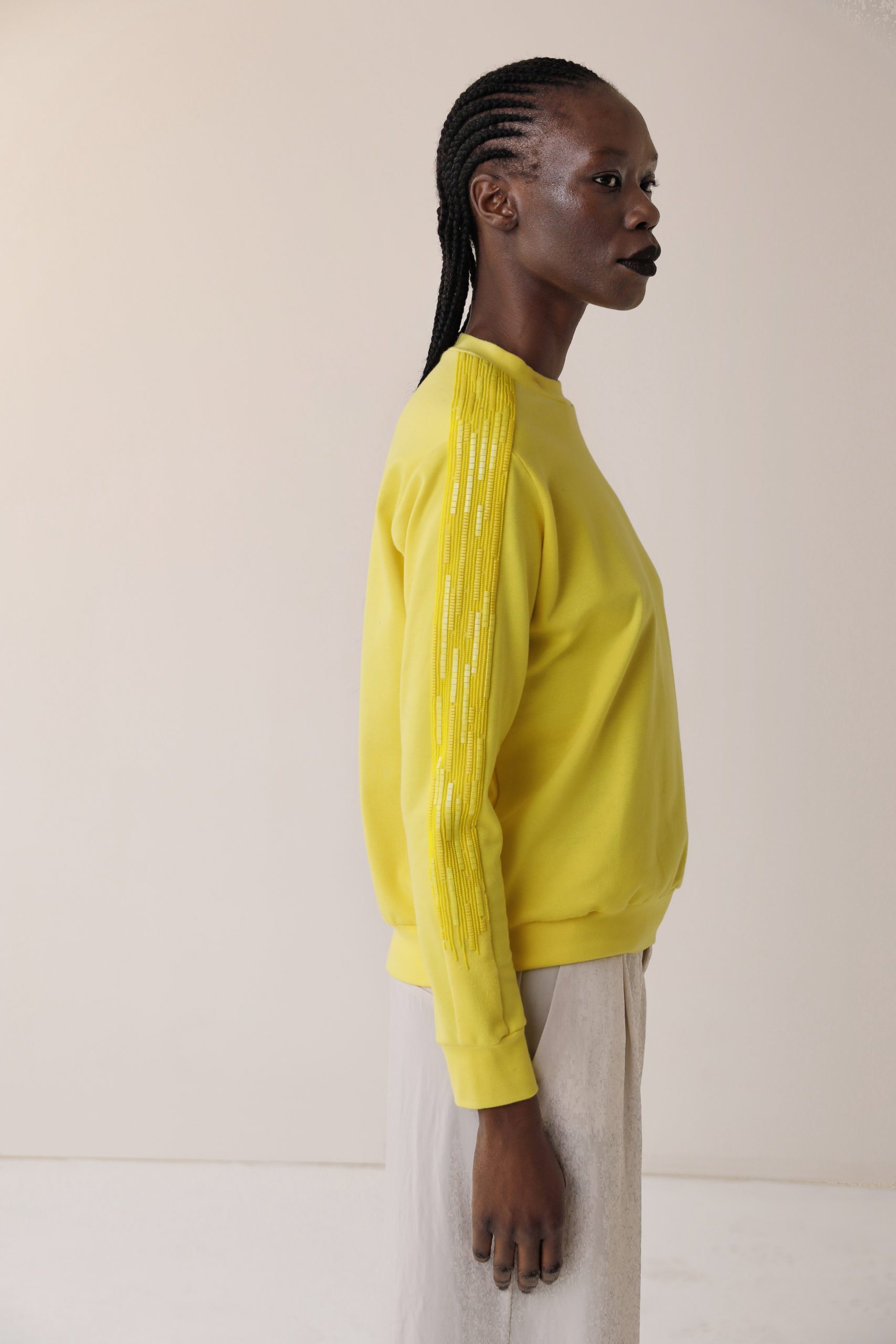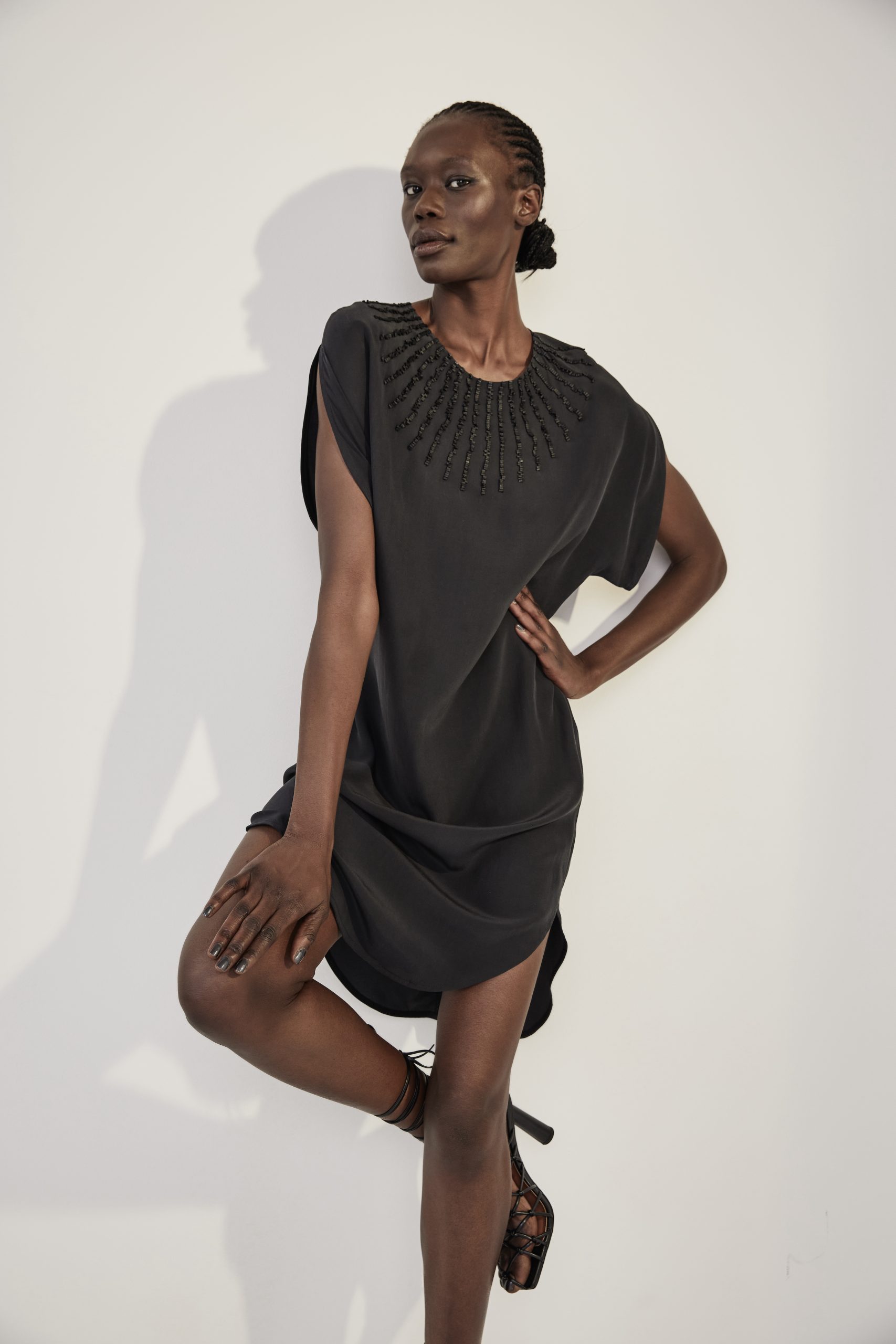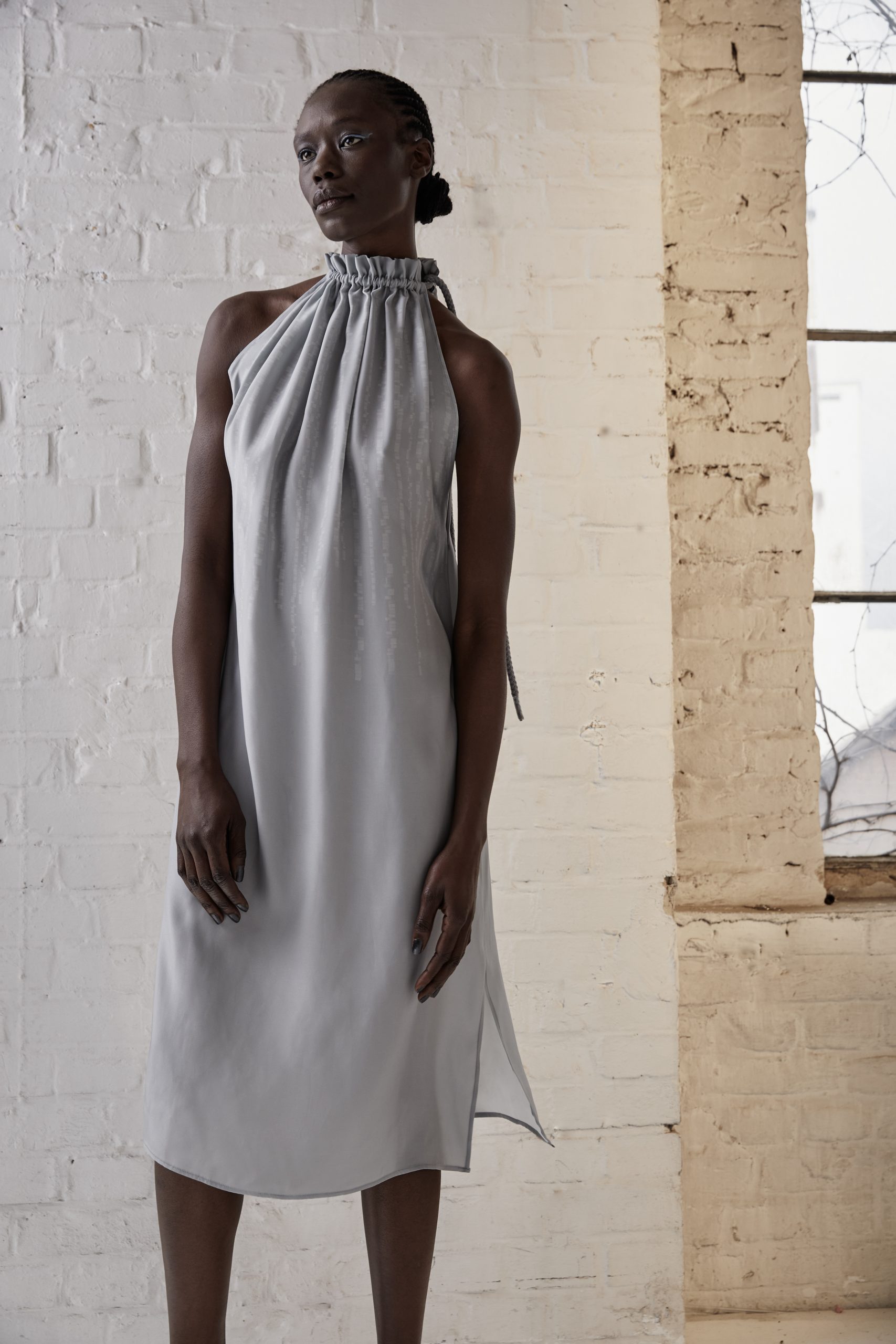“Sustainability” has become an inevitable word in the fashion industry nowadays. A lot of brands are working on more ethical production methods and consumers rethink consumption habits. Of course, in the case of fashion, brands are required to have a design that pursues their own style. In order to achieve both, “Manakaa Project” from Berlin, which advocates traditional techniques and sustainability, is based on the long-established glass beads “Miyuki” from Hiroshima, which boasts a history of 80 years. The brand was launched in 2019 by German designers Stephanie Blank and Valerie Thiesmeyer.
They use 85% of GOTS (The Global Organic Textile Standard) certified fabric, which regulates all processes from production to manufacturing and sales, such as 100% organic silk collected from silk moths grown in vegetation that does not use any pesticides or pesticides. In addition, the glass beads of “Miyuki,” which is the key to the design, are sewn one by one by hand by Indian craftsmen to decorate as embroidery of delicate graphic patterns. “Manakas Project” combines craftsmanship, sustainability and fashion. We asked her about the brand’s philosophy, thoughts on “sustainability,” and encounter with Japanese glass beads.
“Miyuki” beads realize complex coded graphic patterns
−−What is the origin of the brand name “Manakas Project”?
Stefanie Blank:“Manakaa” means “pearl” or “beads” in Hindi and is the name that characterizes the brand’s main bijou. “Manakaa Project” is more than just a fashion brand, so we added “Project”. We aim to integrate fairness, transparency and ecological aspects into our fashion label as a matter.
−−How do you describe the style of “Manakaa Project”?
Stefanie:Luxurious slow fashion with social commitment. The contrast between luxurious bead embroidery and simple cuts creates a timeless style.
−−How did you get to know about “Miyuki” beads?
Stefanie:We came across “Miyuki” beads during our research, as we were particularly fascinated by the selection and the remarkable quality. As there were no GOTS certified beads available, we looked for traditionally made beads produced fairly with good working conditions and high quality. Miyuki is a traditional family business run by the 4th generation with an excellent range and great quality.
−−What are the significant features that make Miyuki beads different from other products?
Stefanie:Because of our coded patterns, we needed beads that could be processed very precisely. All the other alternatives we had tried did not give us satisfactory results, but only “Miyuki.” It was accompanied by a quality that can be processed accurately. In addition, the variety of shapes and colors, especially the choice of matte beads, was an appealing point for us to broaden our design.
Consumers should have a critical eye and grow in knowledge about essential sustainable aspects.
−−It is an Indian male craftsman who embroiders with beads. Why do you stick to craftsmanship?
Stefanie:Our aim was to showcase and reinterpret this handicraft art. We were amazed by Indian craftsmen’s artistry and the accuracy of the embroidery. We found it particularly exciting to put this old, traditional craft into a completely new design context. Not floral or colorful, as is usual in Indian embroidery, but modern, simple, yet elaborate.Through the combination with matt beads, a little more subtle. We want to build a bridge between this centuries-old craft and modern timeless design. Our patterns have names that reference the theme of the embroidery. The design CODE has a clear “coded” look and consists of a sequence of full and half Tila beads, filled up with straight cut Delicas. The WAVE pattern, on the other hand, is a mixture of matt and shiny Delicas that give the impression of waves. The RAY pattern is reminiscent of a ray pattern translated into an embroidery of half Tila beads.
−−The cost is usually higher when using environmentally friendly fabrics or hand-embroidered by craftsmen. I think “Manaka Project” products are accessible in terms of quality. What kind of commitment do you have regarding the price range?
Stefanie:Our quality standard and commitment are also to pay fairly to all those involved in the process and the idea of giving something back to these people. The calculation of our products is therefore not based on the classic retail margins.
−−What is your current sales channel?
Stefanie:We launched the label in 2019 and focused on our e-commerce first. Over time, various high-end and sustainable platforms approached us and added us to their offerings. Then came Corona and all the targeted B2C and B2B formats and contacts had to go on hold. Now we are in intensive talks with various retail partners. We are also developing a format with other sustainable fashion labels based in Berlin to offer pop-up concepts nationally and internationally.
−−Which is the best-selling product?
Stefanie:Our best-selling piece is our one-size dress made from printed peace silk (non-violent silk breeding and harvesting). The dress can be worn and combined both sportily and exclusively, a real all-rounder. We try to find cuts that need slight scaling. This is sustainable; on the other hand, it makes more economic sense, especially for smaller collections like ours.
−−Amid growing interest in environmental protection, the number of sustainable fashion brands is increasing. “Greenwashing” is also becoming more of a problem. How do you feel about this trend in the current fashion industry?
Stefanie:We very much welcome the fact that more and more fashion brands are addressing the issue of sustainability. This shows that there is an increasing demand and awareness among consumers. It is time to stop the “Fast Fashion” phenomenon and create awareness for quality and sustainability again because sustainable fashion does not contradict high-quality and sophisticated design.
Unfortunately, the term sustainability is often used in a very undifferentiated and almost inflationary way. Fashion brands have recognized that sustainability can be a market advantage and supposedly sustainable aspects in production or sourcing are focused on. However, these facts only play a marginal role in the overall label context. It is often not easy to recognize so-called “Greenwashing.” The only way is for consumers to have a critical eye and grow in knowledge about essential sustainable aspects.
−−In the end, can you share with us about the future activity of “Manakaa Project” ?
Stefanie:The following goals are to push sales online and plan the subsequent pop-up events for the next half year. Of course, we are also working on new collection pieces, more silk prints, and, above all, new embroidery designs for “Miyuki” beads. Next year we would like to present ourselves more internationally.
“Manakaa Project”
Co-founded by Stefanie Blank and Valerie Thiesmeyer. After studying information science, psychology and journalism, Stefanie was a trained advertising executive and had worked in marketing and strategic planning. Valerie studied law and completed a voluntary traineeship in the field of press and public relations, worked for a long time in leading positions at a political NGO and an agency for cultural management. In 2019 they launched “Manakaa Project,” which combines the two common passions of fashion, social commitment and environmental protection.
Translation Elie Inoue














